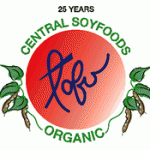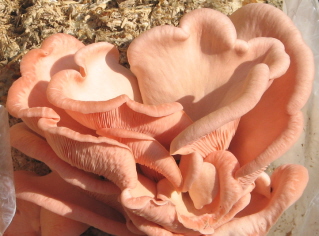Yes, there’s snow on the ground and winter officially begins Sunday, but you don’t need to give up on local foods. I was reminded of this today when I got an email from the National Resources Defense Council that linked to its nifty local-food-in-season tool. You enter your state and choose the half-month “season” you’re interested in, and it produces a list of locally available crops.
Mushrooms, anyone?
The shortcoming
Don’t be discouraged, though, if you enter “late December” as your season, and the tool tells you nothing is available. That’s what happened with me. Turns out the tool, while very handy, is only as good as its sources. In the case of Kansas, the source was a Kansas City-area gardening site and its table from the K-State Vegetable Garden Planting Guide (PDF). It shows planting and harvest times, which aren’t the same as availability. The New York listing, on the other hand, references the state’s harvest calendar, which shows harvest and availability (rather than planting) dates.
Availability, however, is tied to storage and marketing, so it’s true that highly storable potatoes, sweet potatoes, winter squashes, onions, garlic and some apple varieties are probably available somewhere in Kansas, but they aren’t necessarily easily gotten. The local farmers market is closed for the season, and markets like the Community Mercantile and the Casbah Market aren’t set up to store produce. So, unless the local farmers have a means to store such produce, there’s a good chance you won’t be able to find much local produce of that variety.
There’s more
There’s much more to local food than fresh fruits and vegetables, though.
 Local meat, poultry and dairy are plentiful on the farms and at the Merc (and the Casbah, I think). Check out Local Harvest and Eat Wild for sources where you live.
Local meat, poultry and dairy are plentiful on the farms and at the Merc (and the Casbah, I think). Check out Local Harvest and Eat Wild for sources where you live.- Honey, being infinitely storable, is generally available year round, and often even in supermarkets. Find sources also at Local Harvest. Larger producers can be found at Honey Locator. A favorite Lawrence supplier is Anthony’s Beehive.
- Here in Lawrence, we can usually get mesclun and mushrooms yearround from Wakarusa Valley Farm by way of the Merc.
 Prepared foods also are plentiful. You can find, often in supermarkets and certainly (around here) at natural foods stores, prepared local foods such as jams, jellies, salsas, tofu. Again, Local Harvest can help you find sources.
Prepared foods also are plentiful. You can find, often in supermarkets and certainly (around here) at natural foods stores, prepared local foods such as jams, jellies, salsas, tofu. Again, Local Harvest can help you find sources.
So keep eating local food as best you can. It will serve you, your community and the environment well.


Sylvie, Rappahannock Cook & Kitchen Gardener // Dec 19, 2008 at 12:47 pm
I agree that many of those charts that purports to show what local food is available when are fairly worthless. That’s certainly the case for the chart published by the Virginia department of Agriculture. Well intended, I suppose, but so wrong!
So I build my own. Granted, until there is more of a “local” demand enticing more producers, some of those foods will be hard to find. I grow many myself. And of course, the list is applicable to many states or areas with a climate similar to - or milder than - the Northern Virginia Piedmont - i.e. a very large portion of the US. Anyway find the chart at:
http://www.laughingduckgardens.com/ldblog.php/2008/11/06/eating-local-in-the-northern-piedmont-in-winter/
Hope it’s helpful.
Sylvie
http://www.LaughingDuckGardens.com/ldblog.php/